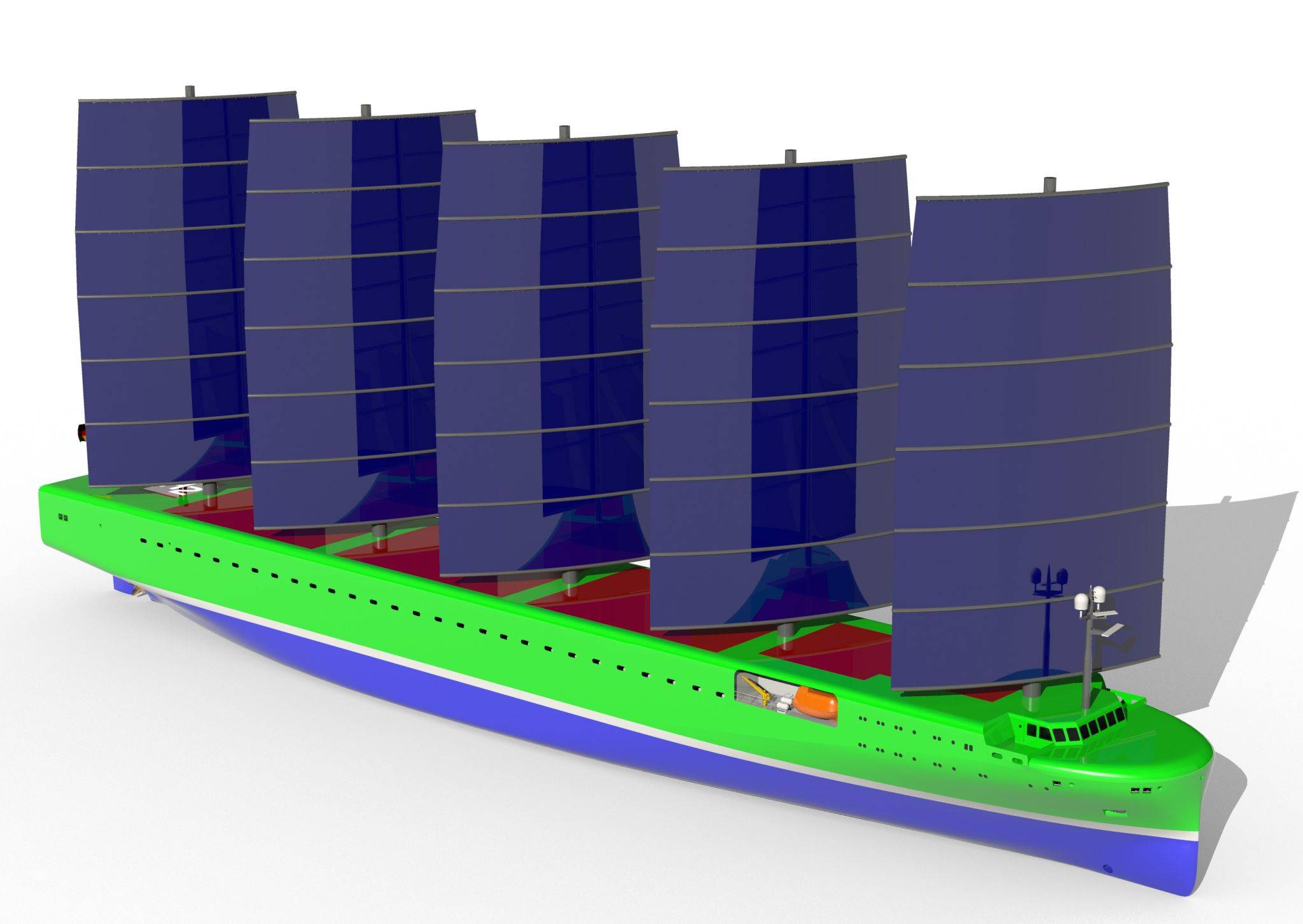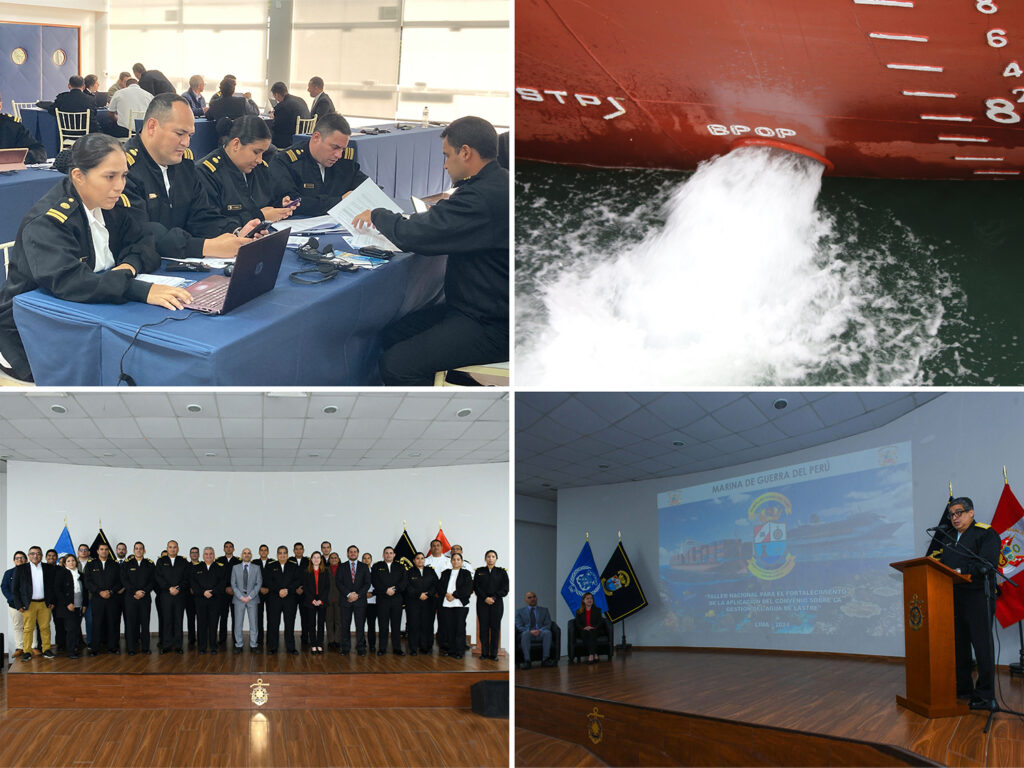We are collaborative to the core and we are a wide church of economic and technology actors that encompasses many different views
By : Magdy Sadek
Exclusive interview with “ Maritime Tickers “He answered many questions and question marks in three parts that will be published successively GAVIN ALLWRIGHT emphasized in his important interview ” We have an existing fleet through to advocates of building an extensive, alternative maritime transport network” adding that IMO goals are ‘mission possible’, one that we as a technology segment feel could be delivered earlier and deeper, in the sense that could go beyond zero-GHG emission
Gavin Pointed out in his interview that needs to be taken to highlight the total cost of ownership of energy sources and technologies, internalizing all of those costs into the ‘market price’, stripping out the hefty subsidies, and pricing the future risks of all of the energy transition pathways on offer.
It is noteworthy the total commercial tonnage is over 2.5 million dwt and that number is set to double in the next 12 months, a trend that we forecast continuing with numbers at least doubling each year going towards 2030
GAVIN ALLWRIGHT has been Secretary General of the International WindShip Association (IWSA) since it was established in 2014 He sits on the International Maritime Organization (IMO)

Wind energy is “political”
Let me at the beginning ask if using wind energy is “political” as you said before?!!
As I mentioned in a recent public posting, there was a question about my job and our association being ‘woke’. On checking the definition of that expression one of the terms associated with that was that of being ‘politically correct’. So, is wind energy or wind propulsion politically correct?
Well, it is certainly ‘economically correct’ – the harnessing of a zero-emissions, zero-infrastructure dependent, globally available, and zero-cost energy source is something of a no-brainer economically, though concerns about upfront CAPEX are understandable but these are mitigated by this solution harnessing the only energy source for shipping that will have a payback period as all other ‘fuel’ sources will cost more than the ones we currently use.
Is having a fleet that is resilient against fuel price volatility and other regulatory and policy risks political?
I am not sure if that is political with a capital ‘P’, but it is surely in the interests of all economic and political players to be resilient against such shocks, some of which have been weaponized by disruptive actors and regimes in the recent past.
This point also resonates among least developed regions and Small Island (large ocean) developing states that are heavily dependent on maritime transport and wholly locked into energy cycles that they do not control, which are often wielded by their ex-colonial occupiers or energy markets that are dominated by the Global North.
In that sense, then any energy source that is abundant, equitable, accessible, and helps to lower or eliminate such dependency will certainly, ultimately be viewed as ‘political’ by some.
However, our association, the International Windship Association (IWSA) is anything but political.
We are collaborative to the core and we are a wide church of economic and technology actors that encompasses many different views, everything from the installation of wind-assist systems on huge tankers and bulkers which lower costs and extend a quickly depleting carbon budget available to our existing fleet through to advocates of building an extensive, alternative maritime transport network made up of smaller, more versatile primary wind vessels that can move ever-increasing loads of cargo and people at, or near, zero-emissions.

Goal of IMO !
Why do you think IMO, goal towards achieving its goal of 100% carbon to be decarbonized in 2050 is mission impossible?
On the contrary, I think that the IMO goals are ‘mission possible’, one that we as a technology segment feel could be delivered earlier and deeper, in the sense that could go beyond zero-GHG emission.
We also see that wind propulsion can also help deliver both an equitable and just transition a transition that will not result in any additional cost to the industry or nation-states by harnessing huge amounts of free wind energy.
However, that vision of a faster, deeper, and cost-neutral transition requires a change in perspective, choices to be made, and action to be taken now.
The perspective change required is one that replaces a ‘fuel’ centric approach with an ‘energy’ centric one.
This means embracing an integrated approach of voyage optimization, energy efficiency measures, and a systematic rollout of wind (both wind assist and primary wind) alongside the ramp-up of new fuels. Studies have shown that this has the potential to deliver up to half of the decarburization required for 2050 by 2030 if we are serious.
The choices to be made include incentivizing these measures above rather than looking solely at subsidies for new fuels.
We have a single dry dock cycle for ships prior to 2030 and no global financial measures at scale are in place that will incentivize this change in behavior prior to that date (even though EU ETS and Fuel EU Maritime will have impact).
Thus, if the industry makes the choice to move quickly on these three measures, we have the means, the capacity and the know-how to deploy all of these measures at scale, now!
Action to be taken, well, we first need to protect first movers and incentivize the earlier adopters, not just passively but actively in the sense of ensuring regulatory and policy pathways are clear and robust.
The financial institutions, policy makers and other key stakeholders need to stop paying lip service to the ‘green energy transition’ and start implementing it as the new normal, we need to stop using the ‘green’ designator and flip that on its head and label investment in old, dirty and destructive energy and industrial activities as such.
More specifically, action needs to be taken to highlight the total cost of ownership of energy sources and technologies, internalizing all of those costs into the ‘market price’, stripping out the hefty subsidies, and pricing the future risks of all of the energy transition pathways on offer.
This will then show the true comparative price of energy sources and technologies and bring to the fore the huge benefits of harnessing direct energy sources such as wind.
Drilling down further, actions such as heavily incentivizing ship owners to make all new build vessels at least wind-ready, encouraging all shipyards to add wind propulsion solutions to their standard equipment lists, and for financiers and insurance companies to add wind propulsion to the lists of technologies that attract lower premiums or higher rankings for those investments would all be impactful – of course, the list could go on….

Swing through more countries !!
You have just concluded a swing through more countries Singapore, South Korea, and Portugal preaching a message have you found someone (Stakeholders) who believes in your message? Or what goals did you achieve during that tour? Is there awareness?
Indeed, it has been a busy few weeks, also included in the list were Italy and Japan. I have been encouraged by the fantastic welcome I have received everywhere, but more importantly, the welcome received by our association more broadly and to our ‘wind propulsion’ message.
At every stop and at every stage we have been learning about new wind propulsion initiatives, support from flag state representatives and government officials and their willingness and eagerness to both learn more about the huge potential of wind, but also highlighting action underway.
Japan is a case in point, with seven shipping lines embracing wind propulsion systems, some at the design/evaluation/decision-making stages and others already either installing or readying to install systems.
We are seeing movement in Korea and China where yards are increasingly active in this sector. In Singapore, there is a lot of interest to get more involved in the sector and to attract wind propulsion actors to the country, which we are looking forward to seeing develop further.
In Italy, we held our quarterly members meeting and MARIN hosted their annual Natural Propulsion Seminar as part of Blueweek, with a packed audience in Venice, both from the technology/engineering world but also shipowners and operators.
Finally, my trip is almost coming to an end in Portugal [though I will also be in Copenhagen next week, representing IWSA as mission ambassadors for an innovation event held by the Mærsk Mc-Kinney Møller Center for Zero Carbon Shipping (MMMCZCS)] During Portugal Shipping Week, just as we had at Singapore Shipping Week,
We have also been met with great interest and we are looking to engage further in this country which is positioning itself again as a maritime lead with renewable energy investment and blue economy capacity/knowledge building activities coming to the fore.
While in Korea, I also got a taste of the huge potential for unlocking small island (large ocean) developing states from fossil fuel (and maritime fuel) dependency with a visit to the Juren Ae ship, a vessel built in Korea using German government funding for use by the Marshall Islands both domestically and internationally. The 48m, 460 GT primary windship was quite a sight to see as it was being prepared to be handed over to the Marshall Islands government in the coming weeks.
All in all, a very positive and energizing experience for us, but also for the maritime stakeholders in the countries we visited. Our wind propulsion flag has been held aloft in an ever-stiffening breeze of market and policy interest.
Wind propulsion as a zero-emissions energy source
Wind propulsion as a zero-emissions energy source. What are the trends and market developments and pathways forward to boost wind propulsion?
This is a big question and one that I am frequently asked. I will try to give a short but clear answer to this.
Today, we have 40 large vessels over 400GT installed with wind propulsion systems, along with 10 wind-ready ships and 10 traditionally rigged small cruise vessels.
The total commercial tonnage is over 2.5 million dwt and that number is set to double in the next 12 months, a trend that we forecast continuing with numbers at least doubling each year going towards 2030.
This trend could of course accelerate further, especially if a robust and high ambition carbon levy were to be flagged in 2025 and then introduced globally by 2028.
We see trends developing in wind-ready delivery where new builds of wind-assist vessels are delivered ready-to-take wind propulsion systems as those become more available or costs are more manageable for that particular company.
We are seeing increasing interest from container ship companies and cruise operators on top of the existing growth momentum in the bulker, tanker, Ro-Ro, and general cargo segments.
There is also a significant growth in primary wind (50%+ wind-powered) vessels under construction or deployed, with four new small primary wind cargo vessels delivered early this year and a couple of larger ones under construction for delivery in early 2025/6.
We are looking at the ‘inflexion’ point in the segment being reached in 2025/26, which is when the market really takes over and the upswing is exponential and self-sustaining.
This period will feature between 100-200 demonstrator vessels in operation and aligns with both a lowering of costs for installations and growth in production capacity of wind propulsion systems,
But this period also aligns with policy changes – i.e. Fuel EU Maritime implemented from 01 January 2025, EU ETS at full cost in 2026, the CII review delivered the same year and clear decisions and market messages sent relating to the mid-term technical and economic measures coming out of IMO too.




